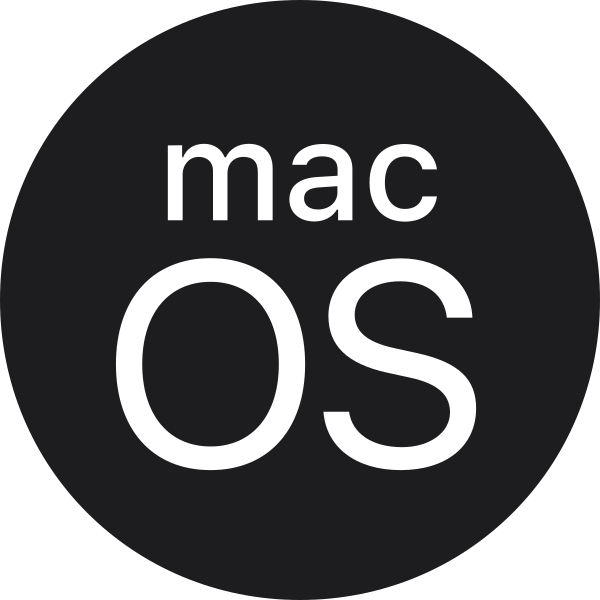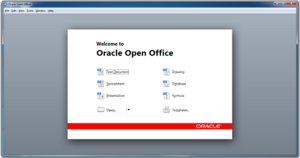Is your Mac up to date with the latest version of the Mac operating system (macOS or OS X)? Is it using the version required by some other product that you want to use with your Mac? Which versions are earlier (older) or later (newer, more recent)? To find out, learn which version is installed now.
Mac Os File Structure
The exFAT file system is a much simpler option. A Comprehensive Guide to Sharing Your Data Across Multi-Booting Windows, Mac, and Linux PCs We're platform agnostic at Lifehacker, which is why we. I use it for static files: music, photo and video files I need to refer to, but that don't change often. The SD card is formatted in exFAT and from time to time it gets disconnected when I bump my Mac during my commute, and to fix the file system corruption I need to mount it on a Windows PC (since Disk Utility doesn't seem to be able to fix it).
If your macOS isn't up to date, you may be able to update to a later version.
Which macOS version is installed?
From the Apple menu in the corner of your screen, choose About This Mac. You should see the macOS name, such as macOS Mojave, followed by its version number. If you need to know the build number as well, click the version number to see it.
This example shows macOS Catalina version 10.15 build 19A583.
Which macOS version is the latest?
These are all Mac operating systems, starting with the most recent. When a major new macOS is released, it gets a new name, such as macOS Catalina. As updates that change the macOS version number become available, this article is updated to show the latest version of that macOS.
If your Mac is using an earlier version of any Mac operating system, you should install the latest Apple software updates, which can include important security updates and updates for the apps that are installed by macOS, such as Safari, Books, Messages, Mail, Music, Calendar, and Photos.
| macOS | Latest version |
|---|---|
| macOS Catalina | 10.15.7 |
| macOS Mojave | 10.14.6 |
| macOS High Sierra | 10.13.6 |
| macOS Sierra | 10.12.6 |
| OS X El Capitan | 10.11.6 |
| OS X Yosemite | 10.10.5 |
| OS X Mavericks | 10.9.5 |
| OS X Mountain Lion | 10.8.5 |
| OS X Lion | 10.7.5 |
| Mac OS X Snow Leopard | 10.6.8 |
| Mac OS X Leopard | 10.5.8 |
| Mac OS X Tiger | 10.4.11 |
| Mac OS X Panther | 10.3.9 |
| Mac OS X Jaguar | 10.2.8 |
| Mac OS X Puma | 10.1.5 |
| Mac OS X Cheetah | 10.0.4 |

HFS Plus or HFS+ is a file system developed by Apple Inc. to replace their Hierarchical File System (HFS) as the primary file system used in Macintosh computers (or other systems running macOS). It is also one of the formats used by the iPod digital music player. HFS Plus is also referred to as Mac OS Extended (or, erroneously, “HFS Extended”), where its predecessor, HFS, is also referred to as Mac OS Standard (or, erroneously, as “HFS Standard”). During development, Apple referred to this filesystem with the codename Sequoia.
Mac OS Extended format is Supported by Mac OS 8.1 and Later.
HFS+ always tries to write the file on a contiguous block: HFS+ always tries to write the file on a contiguous block In terms of fragmentation, the file system will try to find a contiguous block of free space, which will have enough space to fit the new file. This also works for any file undergoing revision. The newer version will be written as a whole, instead of in pieces. This also allows for faster writing and file saving.
Mac’s Hierarchical File System Plus was designed to solve fragmentation
Not all computers, however, need to defragment their hard disks. That is not to say that fragmentation occurs, only that whatever fragmentation does happen resolves itself internally as part of the file system. The Mac OS X uses the Hierarchical File System Plus (HFS+), which is a based on the older HFS system used on the Macintosh Plus and later systems, up to Mac OS 8.1. The advantage of HFS+ is that it is a journaling file system, which helps in data recovery in the event of a power interruption while the hard disk is writing data to the disk. The methods used by a journaling system also enables the file system to be able to defragment on the fly, or while the computer is running.
What are the differences between Mac OS Extended format and Mac OS Standard format?
The most visible difference between Mac OS Extended format and Mac OS Standard format, other than the minimum file size, is the maximum number of files.
HFS Plus is an improved version of HFS, supporting much larger files (block addresses are 32-bit length instead of 16-bit) and using Unicode (instead of Mac OS Roman or any of several other character sets) for naming the items (files, folders) – names which are also character encoded in UTF-16 and normalized to a form very nearly the same as Unicode Normalization Form D (NFD) (which means that precomposed characters like å are decomposed in the HFS+ filename and therefore count as two characters and UTF-16 implies that characters from outside the Basic Multilingual Plane – typically seldom-used characters or those from ancient writing systems – also count as two characters in an HFS+ filename).
HFS Plus permits filenames up to 255 UTF-16 characters in length, and n-forked files similar to NTFS, though until recently, almost no systems software took advantage of forks other than the data fork and resource fork.
HFS Plus also uses a full 32-bit allocation mapping table, rather than HFS’s 16 bits. This was a serious limitation of HFS, meaning that no disk could support more than 65,536 allocation blocks under HFS. When disks were small, this was of little consequence, but as larger-capacity drives became available, it meant that the smallest amount of space that any file could occupy (a single allocation block) became excessively large, wasting significant amounts of space. For example, on a 1 GB disk, the allocation block size under HFS is 16 KB, so even a 1 byte file would take up 16 KB of disk space. Unlike most other file systems HFS Plus supports hard links to directories. Like HFS, HFS Plus uses B-trees to store most volume metadata.



The size of an allocation block is the chief distinguishing feature between the volume format known as the Hierarchical File System (HFS) and the newer, and optional, Hierarchical File System Plus (HFS+) introduced with Mac OS 8.1. The differences are as follows:
Exfat File System Mac
HFS (Mac OS Standard Format).For HFS-formatted volumes, the File Manager can access a maximum of 65,535 allocation blocks on any volume. For small volumes, such as volumes on floppy disks, the File Manager uses an allocation block size of only one logical block. However, the larger the volume, the larger is the allocation block. For example, on a 500 MB volume, the allocation block size is 8KB under HFS.
HFS + (Mac OS Extended Format).For HFS+-formatted volumes, the File Manager can access a maximum of 4.29 billion allocation blocks on any volume. This means that even huge volumes can be formatted with very small allocation blocks.
Mac File System Windows 10

Read Mac Files On Windows
HFS+ continued as the primary Mac OS X file system until it was itself replaced with the release of the Apple File System (APFS) with macOS High Sierra in 2017.
